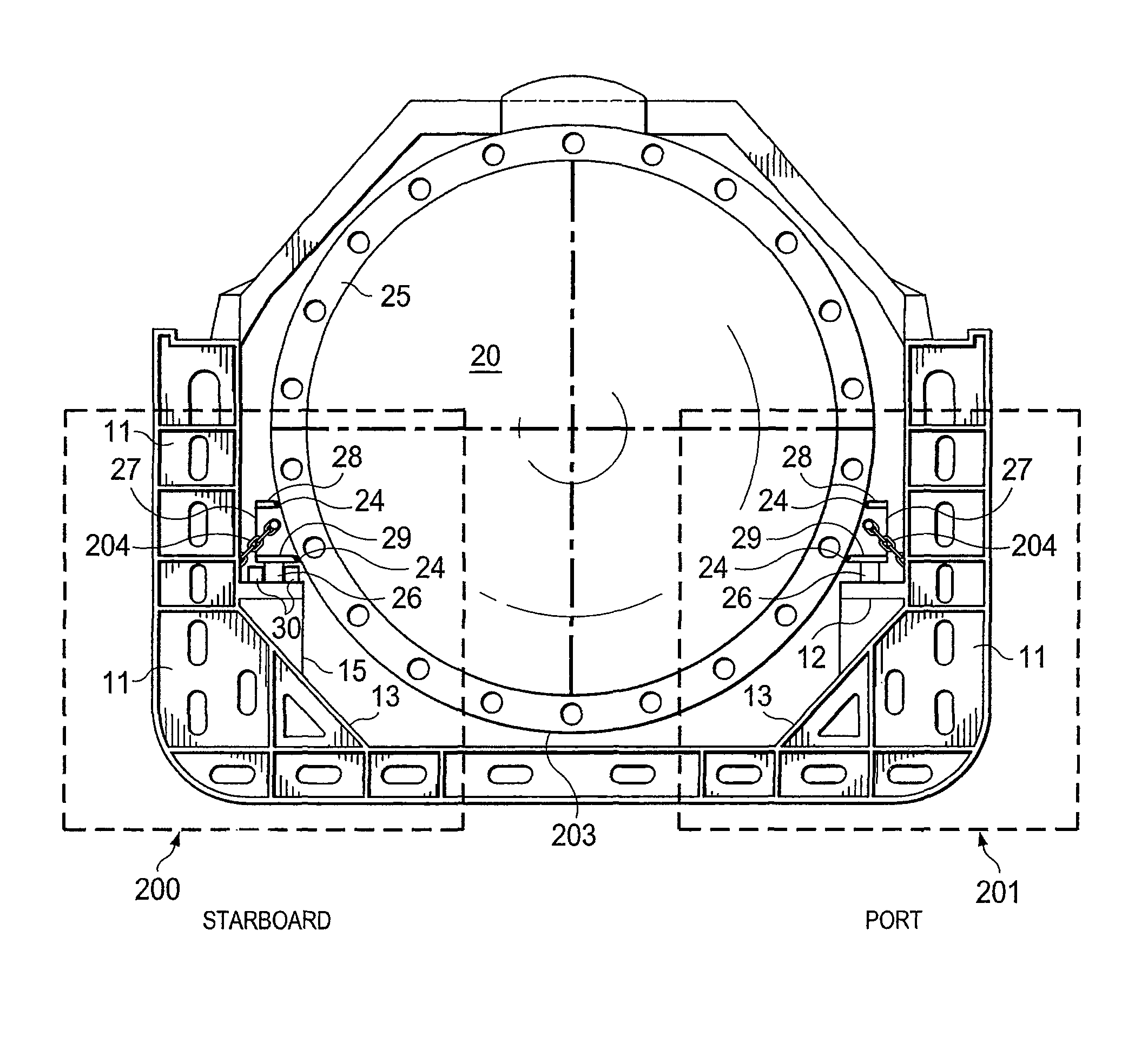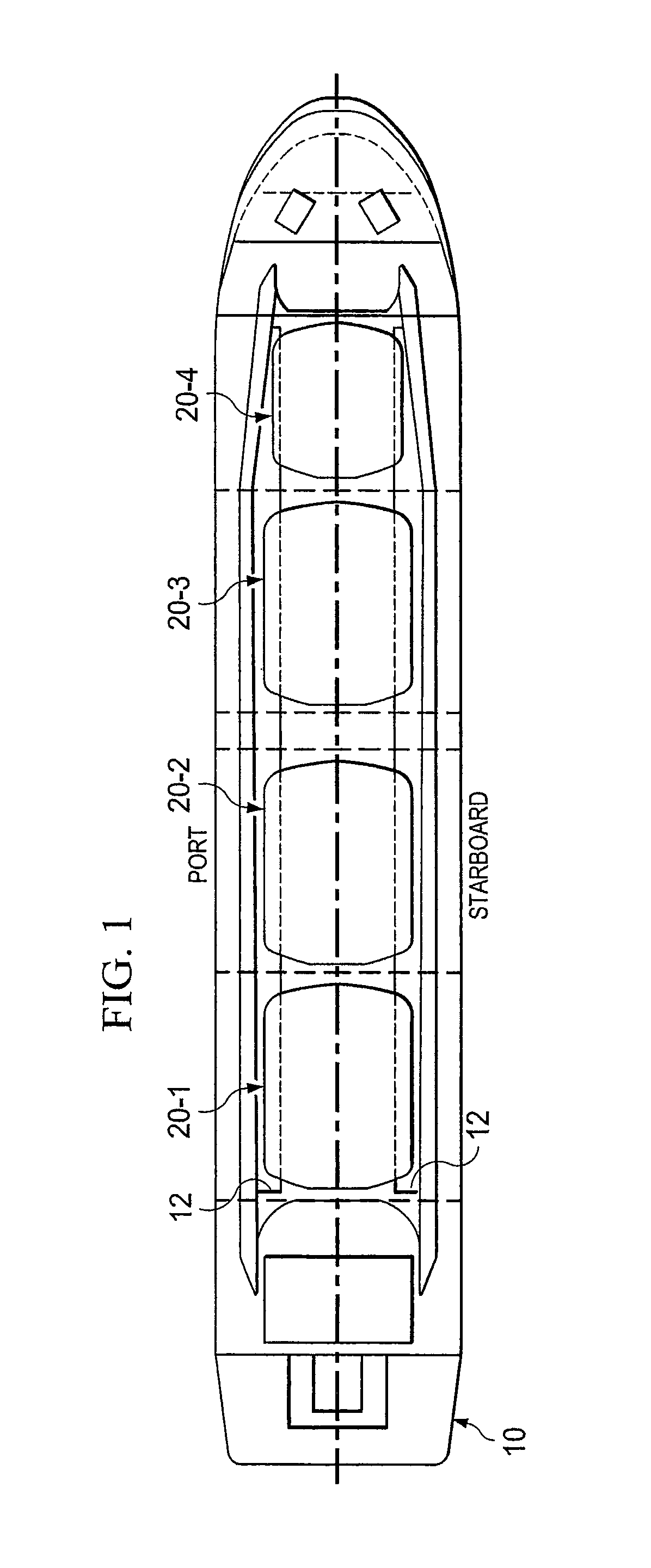Systems and methods for supporting tanks in a cargo ship
a technology for supporting tanks and cargo ships, applied in the direction of hull reinforcements, floating buildings, containers, etc., can solve the problems of limited diameter and length of such tanks, limited number of support points, and interaction between tanks and hulls, so as to reduce friction between pedestals
- Summary
- Abstract
- Description
- Claims
- Application Information
AI Technical Summary
Benefits of technology
Problems solved by technology
Method used
Image
Examples
Embodiment Construction
[0023]FIG. 1 shows a top view of liquefied gas carrier 10, having cargo tanks 20-1 though 20-4 arranged therein. Note that while the cargo tanks are shown in a straight line displaced along the longitudinal axis of the ship, the concepts discussed herein can be used with any placement of tanks and with any number of tanks.
[0024]FIG. 2 shows a cross-section of tank 20 being supported by the system and method described herein. In order to facilitate the support system of this invention it is advantageous to add a support structure, such as the longitudinal stringer 12 which is integrated into the ship's hull structure comprised of transverse web frames 11 and longitudinal bulkheads 13 or girders 14, as shown in FIGS. 2A and 2B. Note that while structures 12, 13 and 14 are preferably continuous structures they can be discontinuous and placed only where necessary.
[0025]Before discussing the inventive concepts of this invention it might be helpful to review a prior art support structure ...
PUM
 Login to View More
Login to View More Abstract
Description
Claims
Application Information
 Login to View More
Login to View More - R&D
- Intellectual Property
- Life Sciences
- Materials
- Tech Scout
- Unparalleled Data Quality
- Higher Quality Content
- 60% Fewer Hallucinations
Browse by: Latest US Patents, China's latest patents, Technical Efficacy Thesaurus, Application Domain, Technology Topic, Popular Technical Reports.
© 2025 PatSnap. All rights reserved.Legal|Privacy policy|Modern Slavery Act Transparency Statement|Sitemap|About US| Contact US: help@patsnap.com



